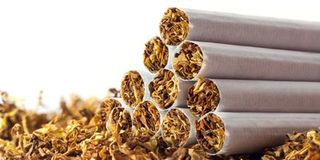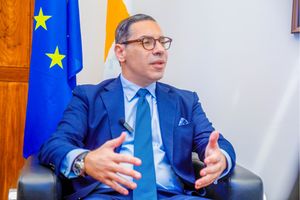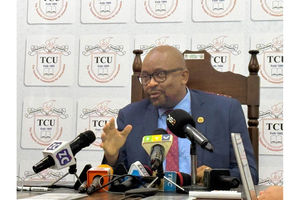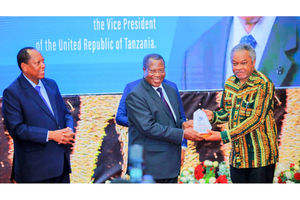Glimmer of hope as government plans to revive tobacco production in Ruvuma

What you need to know:
- The tobacco board’s plans to revive production include also plans to revitalise a processing factory, Sontop, located in Songea.
Songea. Despite the economic potential of tobacco farming, production of the crop in the country has been going down in recent years.
However, the future looks bright now that the Tanzania Tobacco Board (TTB) plans to revive tobacco production in Ruvuma Region.
National Bureau of Statistics (NBS) data shows tobacco production went down from 60,692 tonnes in 2016 to 50,522 tonnes in 2018.
However, yields abruptly rose to 70,824tonnes the following year (2019) before recording another declining trend of 37,546 tonnes in 2020, which is equal to 47 percent of the fall.
The trend adversely affected Tanzania’s earnings that declined from Sh783.8 billion in 2016 to Sh339.4 billion in 2020.
This is despite the fact that tobacco is the second highest income generating crop after cashewnut, which earned the country $575million equivalent to Sh1.3 trillion in the 2017/18 season.
Earnings from cashews were equivalent to a combined income of coffee, tea and tobacco.
Stakeholders attribute the drop in tobacco production to the fall in price of the crop. This frustrated the farmers who reduced their engagement in the cultivation of the crop, ultimately leading to declining production.
Tanzania Trade Development Authority (Tantrade) statistics show that the price of tobacco per kilo went down from Sh4,663 in the 2016/17 season to Sh3,543 in 2020/21.
The tobacco board’s plans to revive production include also plans to revitalise a processing factory, Sontop, located in Songea.
The good news from TTB will be meaningful if the factory is assured of getting sufficient supply of raw materials. Likewise, farmers need assurance of a reliable market for their produce.
TTB director general, Mr Stanley Mnozya, says the factory needs sufficient raw materials (tobacco) in order to operate throughout the year.
It is anticipated that the factory will create about 700 to 2500 jobs for the residents of Ruvuma Region and become another source of government revenue and exports.
Reports from Tantrade show that the main markets for Tanzania’s tobacco are Indonesia, India and Pakistan.
Mr Mnozya says the sixth phase government plans to increase tobacco production in order to increase farmers’ income, create jobs and and increase the crop’s contribution to the national coffers.
According to Mr Mnozya, discussions are ongoing between TTB and Songea-based Premium Active Tanzania Ltd, which is expected to take part in tobacco production effectively from the 2022/2023 agricultural season.
The company is expected to double production to over 1000 tonnes, and Mnozya says doors are open for more firms and individuals to produce the remaining anticipated 2,000 tonnes.
Mr Mnozya says the 3,000 tonnes maximum production target will be reached through efficient revitalisation of the processing plant, something that will attract a huge number of customers. He calls upon stakeholders and regional authorities to work together to realise the intended goal.
He mentions lack of sufficient and reliable buyers as among the major challenges, especially after the Tanzania Leaf Tobacco Company (TLTC), which was the main buyer, opted out of the business.
Tobacco growing regions affected by TLTC’s move include Tabora, Kagera, Kigoma, Shinyanga, Iringa, Mbeya, Singida, Rukwa, Songwe, Geita and Ruvuma.
However, reports say that the number of buyers is now promising, therefore encouraging farmers to resume production.
The TTB director says most cooperative unions in Tabora, Shinyanga, Katavi, Mbeya and Ruvuma regions experienced the blow immediately after TLTC suspended operations.
Mr Mnozya urges growers to increase production and observe better farming principles in order to increase individual income and attract customers.
He cautions that expectant mothers and children are strictly prohibited from engaging in tobacco farming, warning that TTB will take tough action against cooperative unions that will defy the directive.
A tobacco farmer, Mr Haji Haule, who engages in fire-cured tobacco in Ligela Village, in Ruvuma Region, says lack of a reliable market is the main challenge farmers are facing, which he says has led to low prices of tobacco.
Mr Haule says that last year, tobacco was sold at an average of $1.3 (Sh 299)and $ 2.00 (Sh4,6000)per kilo. He believes government’s intervention is needed to help attract more buyers.
The chairman of Songea-Namtumbo Agricultural Marketing Cooperative Union Ltd (Sonamcu), Mr Ally Chemka, says the unions has 5,213 members and 46 Agricultural Marketing Cooperative Societies (Amcos).
“The factory will be revived through a loan that will be secured from NMB PLC. All Sonamcu members will be responsible in the repayment exercise,” says Mr Chemka.
Sonamcu General Manager, Mr Juma Mwanga says a total of Sh8 billion is required for the factory’s revival, which includes installation of new machines. The factory’s annual processing capacity is 12,000 tonnes.
He mentions one of their major strategy as continuing talking with Premium Active Tanzania Ltd in order to increase production of smoked and steamed tobacco from 500 tonnes in the 2021/2022 season to 2,000 tonnes next season.
“Sonamcu, in collaboration with TTB and the ministry of agriculture, plans to hold talks with the ministry of Foreign Affairs and East African Cooperation on how Tanzania could expand its business to Egypt, Algeria and South Sudan for smoked tobacco.”
According to him, smoked tobacco is largely produced in Ruvuma Region and that the three above mentioned countries are potential buyers.





